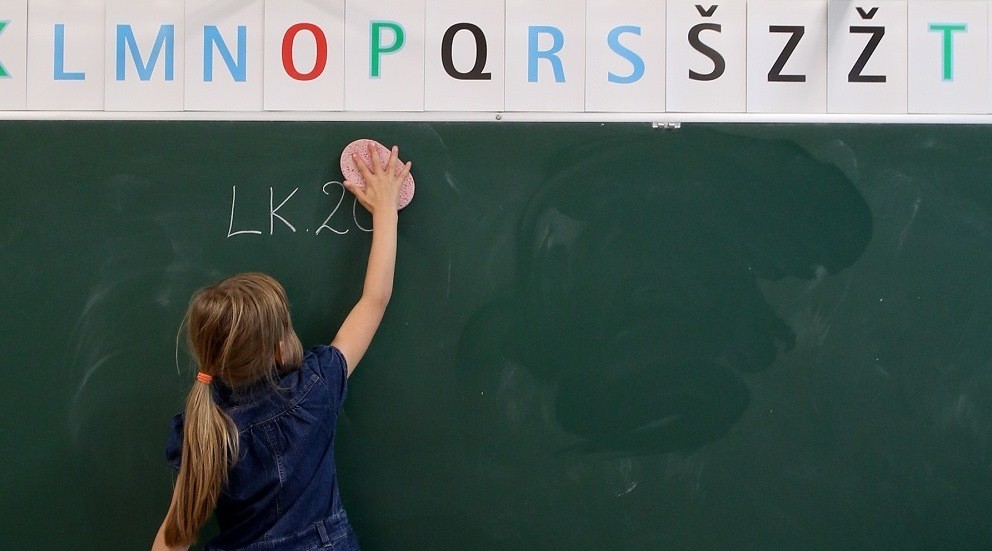Estonia’s first left-wing coalition in decades has finally agreed on a plan of action. Andrei Tuch analyses its plan.
The country has enjoyed remarkable political stability since the turn of the century, trading in a proud post-restoration of independence history of never letting a cabinet serve from one election to the next with the exception of having, in Andrus Ansip, Europe’s longest-serving head of government. But that has not meant a lack of domestic political competition. Every recent coalition has been, to one extent or another, the product of a desire to keep out the leftist Centre Party and its populist chairman and Tallinn mayor, Edgar Savisaar.
The ever-present chief of the Centrists has been a master of political survival, even brushing off a leaked top-secret briefing about an operation by Estonia’s security services to prevent Kremlin-linked money from ending up in his party’s campaign coffers. But his hard-line management style had alienated much of the party’s leadership, and a series of personal issues – first a medical emergency that left him in a wheelchair, then an anti-corruption raid – led to him finally being ousted from the chairmanship in a Centre Party congress in the autumn of 2016.
Meanwhile, the market-liberal Reform Party seemed to become overly complacent in its status as the bulwark against Savisaar. Once the threat was gone, the other coalition partners decided they’d had enough of the uninspiring prime minister, Taavi Rõivas, and the likes of Jürgen Ligi, the often ill-advisedly plainspoken minister of many successive things. Rõivas refused to go quietly and was removed in a parliamentary vote of no confidence.
The coalition that replaced him, however, was a cause of great concern. Not only would it put Jüri Ratas, a Centre Party man, in the top job, but the other two parties are the Social Democrats, and the Union of Pro Patria and Res Publica (IRL). The latter is a nominally right-wing party of moderate nationalists, which has not been able to compete with Reform for the economically liberal, small-government vote, and has instead dabbled with a more family-oriented conservative ideology.
Despite having almost as many parliamentary seats as the other two parties combined (27 vs 15 and 14), the Centre Party does not dominate the government – the only vital portfolio it retains apart from PM is the ministry of economy and infrastructure, held by Kadri Simson, the leader of the party’s internal renewal faction.
A leftist cabinet is unknown territory and a potential threat to Estonia’s flagship political achievements – the balanced budget and the simple, flat taxes.
After days of private negotiation and public speculation, the coalition has finally published a document that will guide its activities until the next general election in 2019. While we encourage you to go and review the full text yourself (especially if you are an Estonian voter and/or taxpayer), reading political manifestos can be a boring and difficult challenge – which is why Estonian World has done it for you. Stripping out the expected, the common ground and the conciliatory fluff, this is what’s important.
The bear in the room
One of the major problems with the Centre Party is that it has historical links to Russian authorities – even before the campaign financing scandal, it had a cooperation agreement in place with United Russia, which forms Vladimir Putin’s mechanism of power. This helped court the vote of disaffected Russian speakers, especially the non-citizens who can vote in municipal elections, and have consistently kept Savisaar in the Tallinn mayor’s seat.
In conversations with the press, Ratas was quick to distance himself from United Russia: while it was not practical to go through with the paperwork of an official termination before a new cabinet was sworn in, the PM stated unequivocally that the agreement was “frozen”.
Presumably the other coalition partners were skittish – particularly IRL – so the manifesto has clear language maintaining Estonia’s place firmly in the pro-West, anti-Russia camp:
Estonia supports (…) protecting the sovereignty and restoring the territorial integrity of Ukraine. The sanctions against Russia can only be alleviated when Russia returns to the generally accepted principles of international law.
(…)
We support the strengthening of NATO’s deterrence measures and the continuous military presence of the allies in Estonia.
The document also retains Estonia’s conciliatory stance towards the UK. National defence is still dependent on NATO rather than any vague future plans of an EU army; Britain is a key player in it; and there are other European institutions better suited to playing bad cop over Brexit.
On the domestic security front, interesting commitments include moving the main police academy to Narva, and introducing Scandinavian-style income-based fines for drunk driving.
Show me the money
The big worry was the economy. What will a left-wing coalition do to people’s taxes and the state’s finances? In the event, not very much. A fundamentally balanced budget is enshrined, and one year’s surplus can be spent next year as long as the total difference does not exceed half a percent of GDP.
For a long time, one of the Centre Party’s ideological tentpoles has been the introduction of a progressive income tax rate. Instead, what the coalition means to introduce is a regressive income tax deduction. Estonia’s personal income tax has never been entirely flat – the first little bit of money you earn every month is free of income tax entirely.
Now, that level will be raised from €175 to €500.
But for anyone whose income exceeds the national average (€858 net, as of summer 2016), the deduction will start to fall – at €2,100 per month gross, the deduction disappears entirely.
The upshot is that low earners will keep more money – someone currently on a 500-euro wage will take home an additional €80 per month, which can be a big help. High earners will lose less than €40 per month, at most – out of a take-home sum of over €1600.
There’s still the question of how this will affect collected revenues and how the government intends to patch a hole in the budget, but it’s not a high price to pay for social solidarity.
Remarkably, the manifesto’s economic section also promises to scrap joint tax filings. Previously, incomes for purposes of this deduction could be added up across a household – a single-earner family could claim against both spouses. This will be expressly prohibited now. Because it only affects the basic tax-free level, it has always been more relevant to low earners; but with the massive increase in the deduction, it would be unreasonable to let a family of four have €2,000 worth of untaxable income a month. On the other hand, support payments for families with three children or more will increase.
While changes the income tax rules will require a change to legislation and so won’t happen immediately, the coalition did announce that for 2017, it will cancel an expected reduction of half a per cent in the rate of social tax (which, at 33%, is paid by the employer on top of the gross salary figure in someone’s contract). This is an executive decision rather than part of the coalition manifesto, but it’s worth mentioning to close out the topic of payroll taxes.
 Curiously, the left-leaning coalition’s plan also includes some highly business-friendly provisions. It’s often touted that Estonia has no corporate tax on reinvested profit, but profit does get taxed when it’s paid out in dividends – traditionally at the same rate as personal income tax. Now that rate will fall from 20% to 14%. While there are some safeguards in place to prevent abuse (such as CEOs invoicing their companies for “management services” rather than drawing a taxable salary), it might have the effect of stripping the economy of long-term investment capital at the expense of increasing short-term tax revenues.
Curiously, the left-leaning coalition’s plan also includes some highly business-friendly provisions. It’s often touted that Estonia has no corporate tax on reinvested profit, but profit does get taxed when it’s paid out in dividends – traditionally at the same rate as personal income tax. Now that rate will fall from 20% to 14%. While there are some safeguards in place to prevent abuse (such as CEOs invoicing their companies for “management services” rather than drawing a taxable salary), it might have the effect of stripping the economy of long-term investment capital at the expense of increasing short-term tax revenues.
Another bit of small business stimulation is the “entrepreneurial account”, an idea previously floated by finance minister Sven Sester (IRL) and dismissed as a corner case with few real-world applications and a negligible economic impact.
A popular measure will be the simplification of company car usage. Currently, it’s a cumbersome affair requiring constant paperwork; the coalition manifesto promises to replace it with a tax that depends on the car, not how much it’s used for private purposes. Offering a company car may now become cheaper than offering a salary increase that would cover that car’s private lease payment.
In addition, the manifesto promises to introduce a new one-time registration charge on cars. Estonia has no annual car tax, but the change-of-ownership and registration fees have traditionally been hiked every time the budget needs more revenue. For both of these car-related issues, however, the manifesto offers no hard numbers.
In a similar revenue-boosting measure, the government intends to set a new tax on sugary drinks, increase the excise on beer, and introduce a bank levy, although it’s unclear what form it will take.
Finally, the manifesto envisions selling off shares in certain state-owned enterprises (including the Port of Tallinn, fresh from a mishandled takeover of the ferry routes to major islands), and setting up a special committee for nominating state-representative directors to corporate boards – previously the purview of ministers.
Learning the lesson
The only interesting statement in the governance section of the manifesto is a promise to get rid of county governments, switching over their functions to municipalities. This comes on the heels of a movement for rural municipalities to consolidate into larger entities.
The education section features a bit more specifics, however. Free school lunches will be provided to all children, and their funding will increase slightly. There is also a provision to bring the median salary of teachers to 120% of the national median before the next election. Not only is this good for teachers, but it’s a generally positive sign that political promises are now given in terms of the median, not average, salary.
The manifesto’s integration section also has a provision for “pedagogically justified flexibility in language and content learning”. This was seen with alarm by some as an attempt to reintroduce fully Russian-language school education by the back door. But as at least one IRL parliament member was quick to clarify, it applies only to specific pilot projects in alternative learning and comes with an obligation for the school to achieve a higher proficiency in Estonian among its students than current mixed-language transition schools have.
The same section includes specific promises to introduce free Estonian-teaching centres for adults in Narva and Tallinn. While Estonian language courses used to be widely available, the integration programmes that reimbursed their costs have been wound down recently.
The social policy and health-care section has non-committal provisions for strengthening the First Pillar of the pension system (the guaranteed state pension), as there is increasingly no faith or trust in the savings and investment-based Second Pillar. What’s missing from this section, however, is any language addressing the main problem of Estonia’s health care system – the staff drain, with medical school graduates and established doctors preferring to move to Scandinavia for higher wages and better working conditions.
It’s also worth mentioning an executive decision by the government – although it’s not in the manifesto – to reintroduce state subsidies for private schools. The argument against subsidies is that they produce elite schools, which are able to supplement their budgets with parental and alumni donations and thus reinforce social inequality from a young age. The argument in favour is that even religious or alternative-learning based private schools in Estonia are bound by the national curriculum; in practice the private schools often include special-needs institutions; and the law, as written, only allows targeted subsidies for teacher salaries and school building utilities at the same level as municipal schools.
In the environment sector, there is a specific commitment to reach a renewable energy source level of 50% for electricity and 80% for home heating by 2030 – but, of course, that’s not a commitment the current cabinet will have to fulfil.
Two years to make it work
What the cabinet will need to worry about, however, are the next parliamentary elections – coming in 2019, immediately after voters see their first tax returns according to the new system. Not only does the coalition need to keep the people happy, but Ratas and Simson will face the challenge of motivating Centre Party voters without the cult of Savisaar.
Estonian World will be here to tell you how they attempt to do that.
I
Cover: Estonian prime minister Jüri Ratas (courtesy of Facebook.) The opinions in this article are those of the author.





